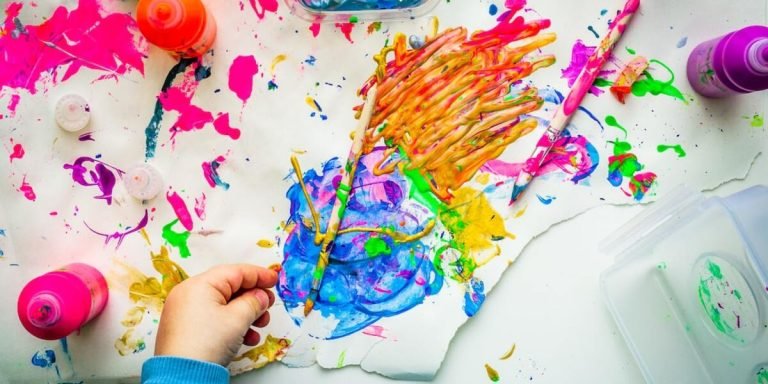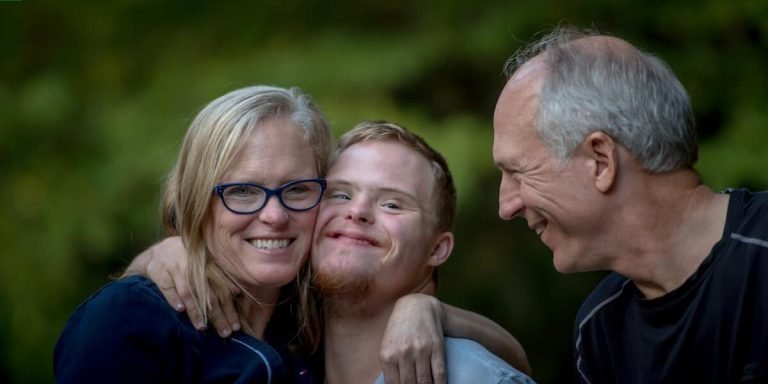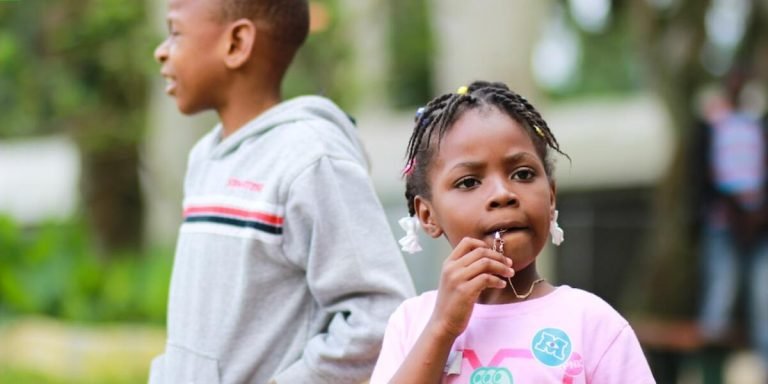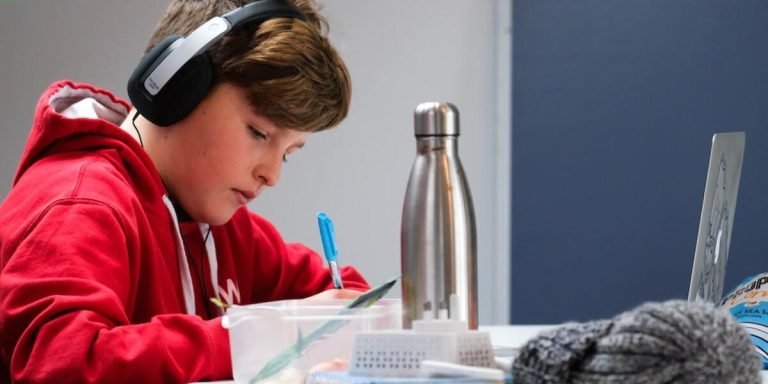Sensory Dysregulation: Understanding Its Impact on Childhood Education
Sensory dysregulation can significantly influence a child’s learning trajectory. It is a condition associated with several developmental disorders, including autism and ADHD, where children have difficulty processing sensory information such as touch, sound, or sight. Their responses to this sensory input can be unpredictable and erratic often resulting in behavioral challenges that interfere with daily life.
In the sphere of childhood education, understanding sensory dysregulation forms an essential aspect for educators and parents alike. Not only does it impact academic performance but also social interaction among peers. This blog post will delve into unpacking what sensory regulation means in practical terms while offering special education resources and support strategies designed for managing its implications effectively at home as well as within educational settings.
Did you know?
Did you know? Children with sensory dysregulation can be up to six times more likely to struggle academically due to disruption in their ability to process information effectively. This is a significant, yet widely overlooked factor contributing towards academic difficulties among school-aged children.
Understanding Sensory Dysregulation in Special Education
Sensory dysregulation, a common challenge faced by special education students in the current era of 2023, relates to how an individual processes and reacts to information received through their senses. Often misunderstood as disruptive behavior or tantrums, sensory dysregulation is less about disobedience and more about discomfort or even distress at certain environmental stimuli that may seem harmless to others. In many instances, children with this condition have difficulty integrating into regular classrooms due to these challenges.
Incorporating technology into strategies for dealing with sensory dysregulation can significantly elevate the quality of special education provided today. Technological tools offer interactive learning environments that allow teachers differentiation in instruction according to each child’s unique needs and capabilities while eliminating potential triggers for sensory overload such as noise or crowded spaces.
Likewise, various digital resources are now available specifically designed around meeting the requirements of youngsters grappling with sensory issues – from apps promoting relaxation techniques using multi-sensory approaches – like soothing soundscape creators- , biofeedback devices tracking physiological responses enabling early intervention during stressful episodes; all complementing traditional therapies serving towards easing integration efforts in educational settings.
Recognizing the Signs of Sensory Dysregulation in Students
Recognizing the signs of sensory dysregulation in students is a crucial aspect of special education. More often than not, this condition can significantly impact the learning capability and social interaction of an affected child.
So, what does Sensory Dysregulation entail? It involves difficulty regulating responses to sensations and experiences that children face during standard educational procedures. For instance, a student may react negatively to loud noises or avoid tactile interactions such as painting with their fingers.
This hypersensitivity or under-reactivity could pose challenges in conventional classroom settings.
Now comes the question – how can we recognize these signs early on?
1. Look Out for Overreactions: One major indicator includes drastic overreaction towards everyday stimuli which seem normal to others but provoke heightened reactions from them.
2. Difficulty Focusing: Children facing sensory dysregulation might have trouble concentrating amidst typical school environment noises like shuffling papers or ticking clocks.
3. Aversion Towards Certain Textures: If you notice reluctance against touching certain textures usually enjoyed by other kids – sandpaper-like surfaces for art classes– it’s another signal pointing towards possible sensory issues.
Leveraging technology has become ever more important in managing issues effectively within a teaching framework in our tech-driven world of 2023. The approach, known as Technology Integration, is specifically designed to aid students with special needs.
Digital Technologies replacing Traditional Methods:
Integrating Sensory Strategies into Individualized Education Plans (IEPs)
Sensory dysregulation can often be a significant hurdle in the process of childhood education, especially for kids with special needs. Traditional teaching methods may not always suit their learning style thereby necessitating an individualized approach to cater to their unique sensory requirements.
Integrating Sensory strategies into Individualized Education Plans (IEPs) is a fundamental strategy paving its way in 2023’s educational landscape. Being tailored according to special learner’s specific strengths and weaknesses, IEPs aim at maximizing each student’s potential while elevating conventional classroom experiences.
Incorporation of such personalized plans embraces technology as a conduit that drives engagement fostering enrichment among students battling sensory dysregulation. Contemporary technologies like Adaptive Learning Software help educators craft lessons compatible with learners’ pace and style which significantly reduces any overwhelming feelings ensuing from traditional class setups.
Tech tools like Virtual Reality extend tactile experiences bridging physical gaps between abstract concepts making them tangible for hands-on exploration fostering curiosity-driven experiential learning.
On the other hand, Interactive Smartboards facilitate youth-friendly graphics creating visually appealing content promoting improved concentration thus reducing distractions arising out owing to sensory overload issues prevalent among these young learners.
Key Resources for Supporting Students with Sensory Issues
The ever-evolving landscape of education in 2023 has recognized the significance of technology integration, particularly for supporting students with sensory dysregulation. It’s a fact that children facing sensory issues require specialized educational resources and support to thrive within a learning environment. Particularly significant are online platforms and advanced software; they’re proving instrumental in providing personalized experiences tailored to those students’ unique needs.
Today’s key components include various applications developed specifically for assisting learners who grapple with sensory challenges. They incorporate visually engaging elements along with sound modulation features – these can help both educators and parents create an optimal environment for these youngsters’ development. Virtual reality (VR), another burgeoning technological innovation, is also being harnessed as it allows teachers to construct immersive learning stage where tactile feedback plays a pivotal role – lowering instances of overstimulation while increasing engagement levels.
On top of these tools, forums have emerged on the internet acting as reservoirs filled with tips, advice, strategies shared by experienced instructors or therapists working closely with children suffering from sensory problems. These communities foster exchange among individuals across geographical boundaries striving towards refining methods used in special education settings.
These digital advancements not only bolster the quality of inclusive instruction but symbolize hope for countless families grappling daily difficulties posed by Sensory Dysregulation Disorder.
Essential Classroom Tools to Help Manage Sensory Challenges
With advancements in technology, managing sensory challenges in the classroom has become more efficient for educators and beneficial for students dealing with sensory dysregulation. Here’s a rundown of some valuable tools that can be integrated into your teaching methods to help enhance learning conditions.
1. Sensory Seating Options: Alternative seating options such as yoga balls or wobble chairs can significantly aid children dealing with tactile defensiveness by providing constant yet subtle movement under their control.
2. Noise-Canceling Headphones: These are incredible resources when handling auditory sensitivities among students who may find typical school noise levels overwhelming.
3. Interactive Whiteboards/Screens: This tech integration tool helps visual learners interact better; it allows them to engage multi-sensorily, enhancing understanding and retention of concepts taught.
4. Therapeutic Putty/Fidget Tools: Available as mobile applications now, these allow kinesthetic input during lessons without creating distractions for others around them.
5.Immersive Technology – AR/VR : Immersive technologies like Virtual Reality(VR) and Augmented Reality(AR), have shown immense potential in supporting kids dealing with spatial-, vestibular-, or proprioception-associated issues through simulated real-world experiences.
Online Platforms Offering Tailored Activities for Sensory Regulation
Navigating the world of special education can be complex and overwhelming, especially when you’re catering to children with sensory dysregulation. Thankfully, technology has made it considerably easier for parents and educators alike by offering a variety of online platforms specifically designed to support these students.
One such platform is SensoryAppHouse.com which specializes in creating apps tailored towards individuals with various sensory needs. From interactive games that enhance visual tracking skills to relaxing bubble pop activities aimed at calming anxiety, this site provides an array of resources curated specially for those dealing with sensory issues.
Another gem in digital landscape is SPDStar.org’s “Sensational Brain.” Offering handy tip sheets alongwith webinars about how one can incorporate everyday strategies into routines aiding learners grappling processing challenges; it’s user-friendly approach makes it easy anyone wanting understand more intricacies surrounding topic Sensory Processing Disorder .
Collaborative Approaches to Enhance Support Systems
In the current digitized landscape of 2023, it’s no surprise that technology has seeped into various facets of life. This includes education and particularly special education for children dealing with sensory dysregulation issues. Tremendous strides have been made in this sphere over recent years.
The collaborative approach is one such stride taken to enhance support systems utilizing cutting-edge tech tools – building bridges between educators, therapists, specialists and parents alike. The aim here isn’t merely to revolutionize learning experiences but also provide consistent assistance tailored individually according to each child’s unique needs.
Technology integration plays a significant role within these collective efforts resulting in better strategies both inside and outside classrooms settings. Increased use of virtual reality software or educational apps helps simulate activities which can narrow down overwhelming environmental stimuli thus aiding kids diagnosed with sensory dysregulation challenges significantly.
Furthermore, data sharing platforms eases coordination among all parties involved – whether teachers providing real-time progress reports or parental access tracking daily student interactions at school thereby ameliorating understanding and cooperation towards targeted learning objectives.
Thus,melding technology with compassion paves the way for innovative approaches tackling childhood educations’ diverse complexities especially when catering to individuals grappling with sensory dysregulation; making great leaps forward not soloist strides but together as a unified team formed via pillars comprising families ,educators ,and other practitioners .
Building Effective Communication Between Educators and Therapists
Building effective communication between educators and therapists is vital in providing consistent support for children with sensory dysregulation. Helping these students navigate the world can be a complex task, especially when considering diverse learning environments. In 2023, technology integration serves as an invaluable resource to bridge this gap.
Firstly, it’s essential that both parties understand each student’s unique needs by sharing insights on symptoms and coping mechanisms of sensory dysregulation. Technology companions like interactive apps allow trustful exchange of information regarding progress reports or sudden changes.
Secondly, collaborative efforts need to incorporate strategies aimed at creating inclusive classrooms. Technological tools like noise-cancelling headphones or weighted blankets delivered through specialized online platforms help lessen distractions arising due to hyper-responsiveness towards environmental stimuli – common among students with sensory dysregulation.
Furthermore, assistive technologies such as digital voice assistants could also come in handy during therapy sessions outside school hours; offering guided relaxation techniques specific for dealing with overstimulated scenarios which might arise within an educational setting too.
Technology integration further facilitates goal-setting process concerning remedial measures based on shared performance data making intervention more timely efficient than ever before possible!
Finally yet importantly , ongoing professional development programs powered by e-learning modules provide formidable opportunities for teachers and therapists alike . They allow staying updated about latest research findings related technological advancements targeting special education resources support thereby promoting best practices fostering harmonized relationships amongst team members ultimately benefiting learners most .
Engaging Parents and Caregivers in Managing Sensory Dysregulation
Ensuring a conducive learning environment is essential for every child, but it becomes more significant when dealing with children experiencing sensory dysregulation. As we integrate technology into education systems, enhancing support for such children should be a collaborative effort involving parents or caregivers as well.
Teachers can employ the following strategies alongside caretakers to manage sensory dysregulation as they streamline the digital platforms used to deliver lessons and resources:
1. **Enabling Routine**: A predictable schedule gives comfort to these children while catering to their need for structure. Educators may use simple project management tools available online like Trello or Evernote that allow joint access by both educator and caregiver.
2. **Sensory Breaks Implementation**: Short breaks during class hours using designated applications offer opportunities for regulated physical activity designed specifically towards managing overstimulation problems.
3. **Technology-aided Monitoring Solutions**: With rising AI inclinations in our teaching methodologies, monitoring apps provide real-time information about how each child engages with different stimuli helping educators update customized learning plans regularly collaboratively with parents.
4. **Constant Digital Communication Bridge** between stakeholders: Regular updates on progress through emails or mobile communication apps facilitate quick adjustments needed at home relating school learnings effectively.
Conclusion
In closing, sensory dysregulation may appear as an insurmountable hurdle at times but armed with insight and informed strategies, it becomes just another aspect of a unique learning journey. All children deserve the opportunity to thrive in an environment that fosters their growth without causing undue stress or anxiety. With patience, consistency and understanding from parents and educators alike, we can help create such supportive settings for our youngsters.
We invite you to explore our website further where there’s always more wisdom to unearth about childhood education. Our online resources are stocked with comprehensive guides offering essential knowledge on different educational challenges faced by kids today including sensory dysregulation among others. We continuously strive towards empowering every parent and educator so they can confidently guide young minds towards bright futures!







